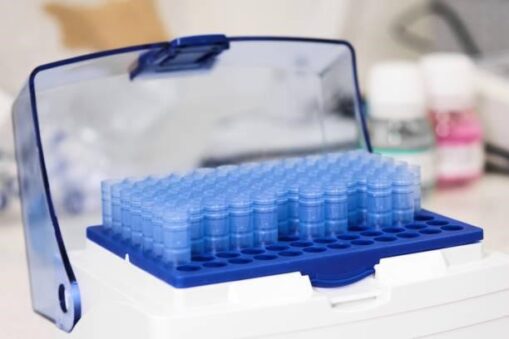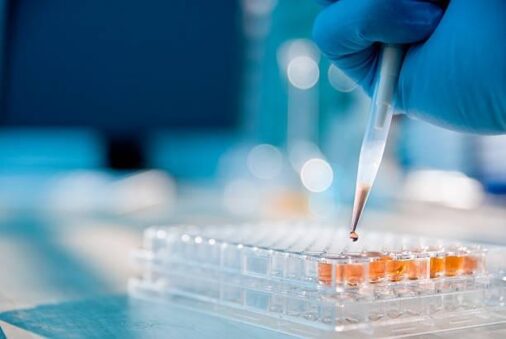Top Liquid Handling Equipment Used In Labs
- Lab Equipment
- Posted on
-
by John
- 0 comments

Liquid handling entails the transportation of liquid reagents using a wide variety of large-scale robotic platforms and single-channel pipettes. These instruments, utilized everywhere from research to therapeutic applications, are indispensable for delivering precise measurements. To achieve speed, robustness, low cost, and repeatability, liquid handling products can be either manually operated, such as syringes or pipettes, or automated, based on robotic systems combined with sensors such as resistance sensor or force sensor. In the field of life sciences, liquid handling products are utilized for laboratory studies such as antibody testing, gene sequencing, drug screening, and protein crystallization.
Role Of Liquid Handling In Labs
Protocols such as RNA/DNA purification, ELISA, cell culture, PCR/Sequencing reaction setup, automated detection assays, reaction cleanup, protein purification, and MALDI-TOF spotting utilize liquid handling. This apparatus minimizes or eliminates contamination, reduces sample yield irregularities, and produces uniform quantities. Considerations for liquid handling equipment include the quantity of samples processed each day, the budget, the available laboratory space, and the equipment’s adaptability. Investing in high-quality equipment that can adapt to increased throughput and the introduction of new protocols is essential to the success and productivity of a laboratory.
Commonly Used Liquid Handling Equipment In Labs
Burette
A burette is used to accurately dispense small portions of liquid called aliquots, or occasionally gas. It comprises a long glass tube with a valve to regulate the flow of liquid at one end. Pipettes and burettes serve essentially the same purpose.
The volume markers on a burette begin at zero and rise as they descend. A laboratory burette of standard size can deliver up to 50.00 milliliters (mL) of liquid. The volume marks are accurately placed at 0.1 mL increments so that the volume may be read to the first decimal place and subsequently estimated to the second decimal place.
The curved curvature of liquid in a burette is termed meniscus. When reading a burette, it is essential to read the bottom of the meniscus. This is typically more accurate than reading the headline. When reading a burette, it is sometimes helpful to position an index card with a strong black line behind it to avoid glare.
Automated Petri dish filler
Petri dishes are ubiquitous in laboratories and serve a range of cell culture functions. Depending on the desired outcomes, they can be filled with a variety of media types that may additionally contain viricide, bactericide, or fungicide. Pouring into these dishes by hand is laborious and time-consuming. An automated petri dish filling system can be an excellent addition to a laboratory in this situation. Typically, these plate pourers are intended to quickly and sterilely fill hundreds to over a thousand petri dishes every hour. Numerous models have been designed to accommodate numerous dish types with simple switching capabilities.
Pipette
A thin-walled glass pipette with a tapered tip. Some are made of plastic. In order to prevent any contamination and cross-contamination, they are frequently discarded after usage. They are mostly used for medium transfer and solution sampling.
Similar to the Komagome pipette, a rubber bulb is typically affixed to the pipette’s top to operate as a pump to aspirate and expel liquid. It is useful for transporting tiny quantities of liquid that do not require precise measurement.
Microplate Dispenser

Microplate Dispensers permit precise and automated distribution of liquids and reagents into a range of microplates and vials.
Microplate dispensers, also known as multichannel pipetting systems and automated pipettors, are systems that deliver a predetermined amount of liquid to a microplate automatically. When buying a microplate dispenser, accuracy, repeatability, speed of liquid transfer, and volume dispensed are crucial factors. Automated pipetting devices allow laboratories to boost productivity while decreasing human error.
Frequently, a number of microplate dispensers with varying dispensing ranges are preprogrammed, and further customization of volume ranges can be programmed. Microplate dispensers may also be referred to as Nano dispensers due to the fact that the majority of them are used for volumes less than 1 liter, also known as nanolitres. Some microplate dispensers may be compatible with microplate automation equipment.
Fluid Aspiration System
Fluid Aspiration Systems are ideal for decontamination operations in a cell culture laboratory. Fluid Aspiration Systems are intended to quickly and easily remove supernatants, cell culture media, and other liquids from dishes, flasks, culture bottles, centrifugation tubes, multiwell plates, and more.
The removal of medium from cell cultures, supernatants after centrifugation, and wash solutions from immunoassay well plates are common applications. Then, vacuum systems are commonly employed for liquid aspiration, collecting, and disposal.
A simple routine job such as liquid aspiration requires user-friendly, simple-to-install, and simple-to-use equipment. Protecting the vacuum source from contamination by liquids and aerosols using an overflow trap and a filter is not only a necessary precaution for human safety when dealing with biological or dangerous liquids, but also a good laboratory practices.
Fluid Handling Syringes
 Microliter syringes can only be used with liquids. They have a hand-fitted stainless steel plunger and a syringe barrel with a fine bore. These syringes are suited for homogeneous samples that are resistant to precipitation and glass bonding.
Microliter syringes can only be used with liquids. They have a hand-fitted stainless steel plunger and a syringe barrel with a fine bore. These syringes are suited for homogeneous samples that are resistant to precipitation and glass bonding.
Under optimal conditions, plunger wear is low, and the lifespan of a Microliter syringe is practically indefinite. However, when utilizing heterogeneous solutions with a Microliter syringe, the user must clean the syringe thoroughly after each use.
How To Select A Laboratory Automated Liquid Equipment?
Identifying the appropriate type of liquid dispenser is the first step in selecting the liquid handling solution for your laboratory’s unique requirements. The appropriate equipment must be able to provide:
- Appropriate capacity, speed, accuracy, precision, and volume for your laboratory’s workload.
- Upgrade-friendliness in the future if demands increase
- The product is adaptable and user-friendly.
- Size-appropriate; compact if the laboratory has limited space for automated instrumentation.
- A level of control and automation commensurate with the laboratory’s budget.
Additionally, it is important to investigate the after-sales service, purchasing warranty, and details of the manufacturer you choose to purchase from. This will enable a smooth warranty claim or repair process, even if an unanticipated machine failure occurs.
Advantages Of Liquid Handling Gear
Sample Identifiability
Sample tracking and chain-of-custody processing are available for your tests through the use of barcode scanning options and the ability to verify sample transfers with a digital audit trail.
Streamlined Workflows
Increase operator walk-away time with reliable pipetting systems, versatile labware transportation options, and integrate modules for more fully automated operations.
Consistent Outcomes
The liquid handling equipment must be the cornerstone of precision and dependability for accurate, repeatable pipetting.
Conclusion
Liquid handling entails the transportation of liquid reagents using a wide variety of large-scale robotic platforms and single-channel pipettes. These instruments, utilized everywhere from research to therapeutic applications, are indispensable for delivering precise measurements.
References:
https://www.rdworldonline.com/what-is-a-burette/
https://sciencing.com/glassware-apparatus-uses-7445911.html
https://hudsonrobotics.com/uses-of-an-automated-liquid-dispenser-in-the-laboratory/
https://www.laboratory-equipment.com/blog/lab-microplate-microtiter-features-accessories-comparison/

